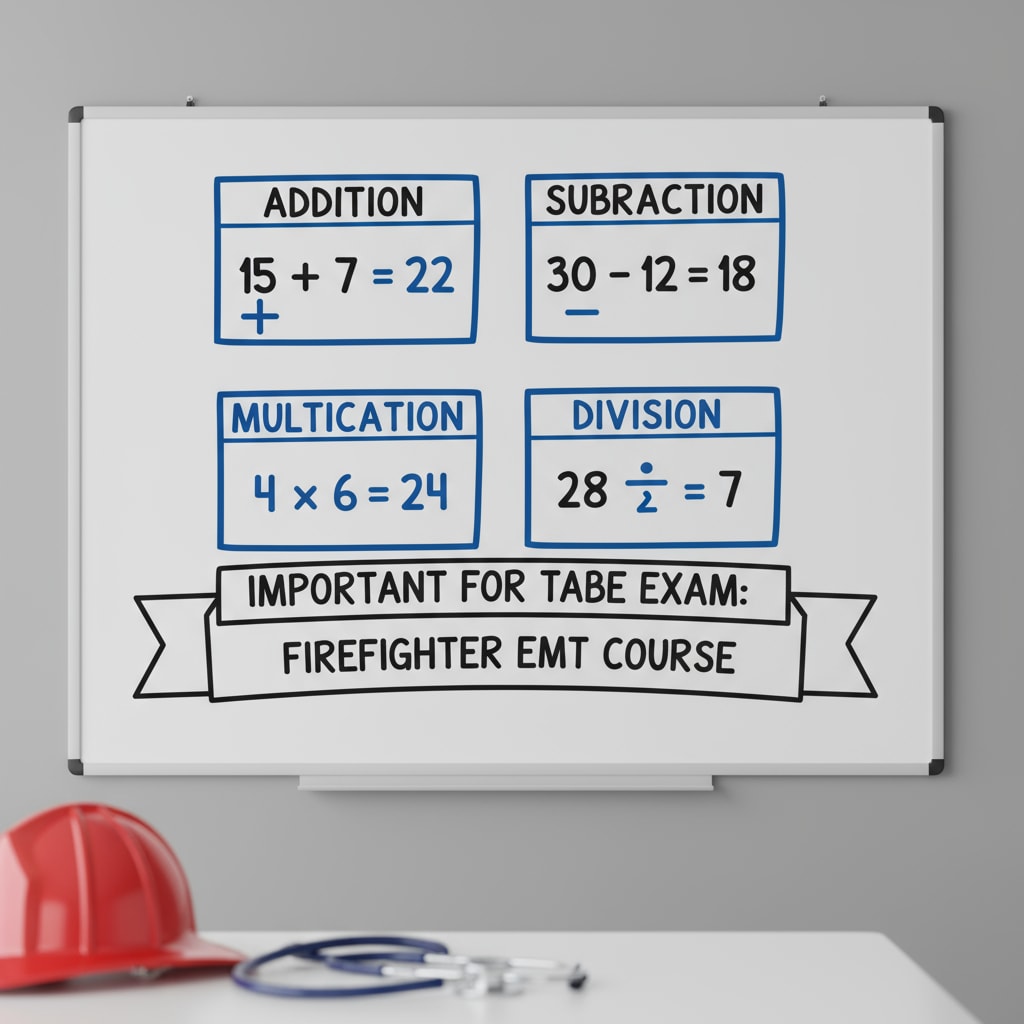For individuals aspiring to become firefighters and enroll in the EMT (Emergency Medical Technician) basic course, the TABE (Test of Adult Basic Education) exam, particularly the math section at Level A, is a significant hurdle. The TABE exam assesses your fundamental skills in various areas, and a strong performance in math is crucial for success in the EMT program and your future firefighting career.

Understanding the TABE Math Section for Firefighter Aspirants
The math portion of the TABE exam at Level A covers a range of concepts. It includes arithmetic operations such as addition, subtraction, multiplication, and division. You’ll also encounter problems related to fractions, decimals, and percentages. These basic math skills are not only important for passing the exam but also for practical applications in the field of firefighting. For example, when calculating medication dosages during EMT training or determining the amount of water needed to extinguish a fire, a solid understanding of math is essential. Learn more about the TABE Test on Wikipedia

Building a Strong Foundation in Math Concepts
Start your preparation by reviewing the fundamental math concepts. Refresh your knowledge of number systems, including integers, rational numbers, and real numbers. Practice solving equations involving one or two variables. Understanding algebraic expressions and how to simplify them is also key. For instance, if you’re faced with an equation that represents the relationship between the pressure of a fire hose and the flow rate of water, being able to solve it accurately can make a big difference. Additionally, study geometry basics such as calculating the area and volume of different shapes, which can be useful when dealing with the dimensions of a fire truck or the space in a building during a rescue operation. Explore more about mathematics on Britannica
To enhance your skills, use a variety of study resources. There are numerous textbooks available that specifically focus on TABE math preparation. Online courses and educational platforms also offer interactive lessons and practice problems. Many of these resources provide step-by-step explanations, which are invaluable for clarifying difficult concepts. Make a study schedule and allocate dedicated time each day or week to practice math problems. Consistent practice is the key to improving your speed and accuracy.
Readability guidance: In this article, we’ve used short paragraphs to make the information more digestible. Each H2 section has a clear focus, and we’ve provided practical examples to illustrate key points. Transition words like ‘for example’ and ‘additionally’ have been used to make the flow of the article smooth.


